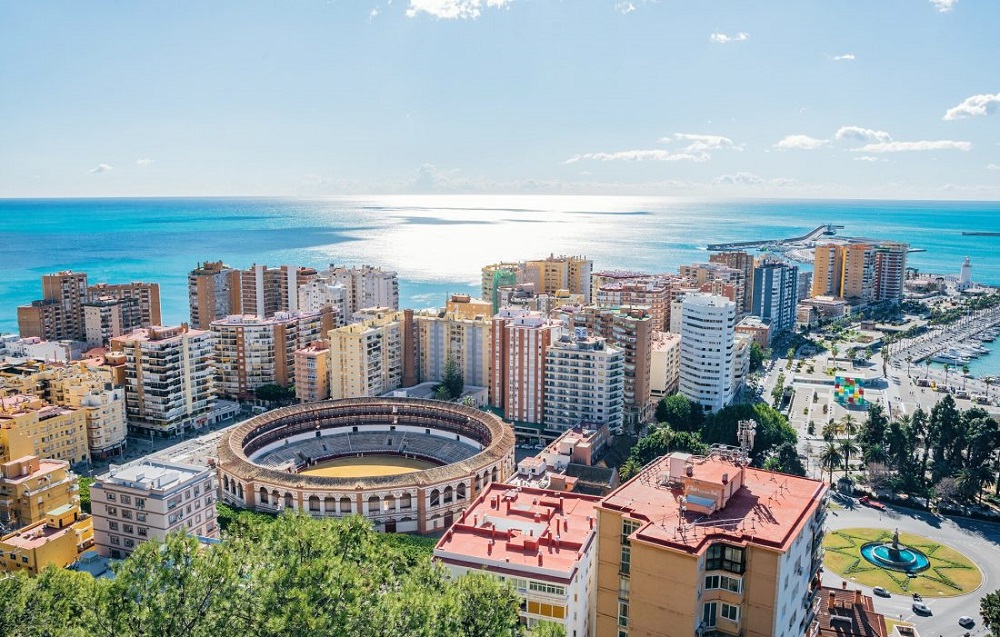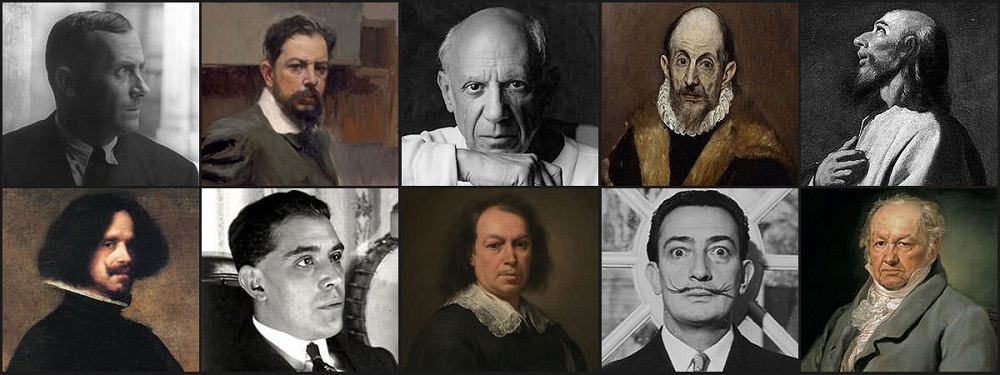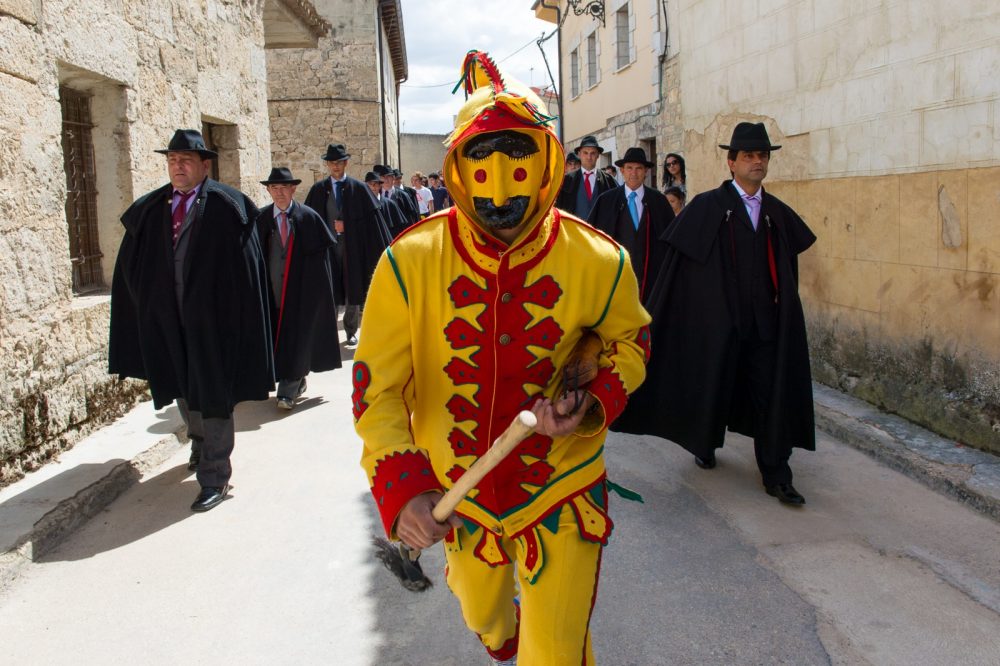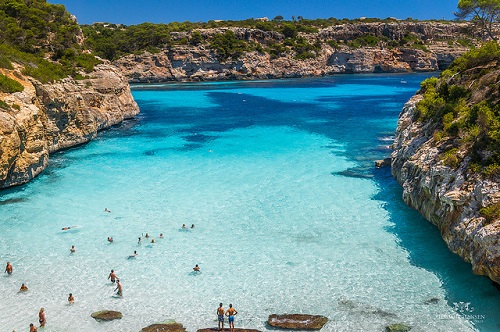Málaga enjoys soft weather throughout the year. It proudly shows visitors its strengthened city with diverse historical and cultural heritage buildings which makes it an ideal place to spend a family vacation. Málaga truly offers a variety of activities to do and see that it could be hard to decide where to start, here we explore the 8 attractions, which you should not miss on your next visit.
1- Gibralfaro castle:
 via – exploramalaga
via – exploramalaga
A huge castle spreading over Málaga’s hillside considered one of the most impressive attractions. It’s a steep, winding and seemingly endless pathway to the top. What you can see inside this historic monument are the solid ramparts which rise majestically from dense woods of pine and eucalyptus; inside the fortress itself, you will find some buildings and courtyards, similar to those in the Alhambra. The ramparts have been well rebuilt, and you can walk all the way around them.
Moreover, the magnificent Gibralfaro castle sits on a high hill overlooking Málaga city and port and dates back to the 10th century. Built by the Caliph of Cordoba, this impressive hilltop castle was extended in the 14th century by the Sultan of Granada. Walking along the length of its turrets, you can see the ocean and the surrounding landscape for miles and miles. Like the Alcazaba, to which it was connected in the 14th century, the Gibralfaro is especially well guarded and has been expertly reconstructed.
2- The Alcazaba:
 via – visitcostadelsol
via – visitcostadelsol
One of the most symbolic places of Málaga city, the Alcazaba, is located at the foot of Mount Gibralfaro, one of the largest Muslim military buildings remaining in Spain. Definitely, the important is entering and discovering it every corner while getting amused. Its palaces, courtyards, and fountains will take you to another era. It was home to kings, governors, and nobles of the time.
This earliest Moorish castle was built in the 9th century and restored in the 11th century on the ruins of a Roman bastion. The town’s Muslim rulers governed from this fortress for several centuries. Advantageously perched on the Mount of Gibralfaro, the palace contained three circuits of defences walls and 110 major towers. You can see some of the lasting towers including the Torre de la Vela (tower), the impressive Torre Del Homenaje (tower) and the Arco de Cristo (entrance).
Today, the Alcazaba holds the Museum of Málaga, which houses two museums: the first is The Provincial Museum of Fine Arts has a magnificent permanent collection of local 19th-century paintings as well as celebrated pieces by Spanish artists Enrique Jaraba, Joaquin Sorolla, Muñoz Degrain, and Salas.
The museum also displays two of Picasso’s ancient works: the Study of Old People painting and The Old Man with the Blanket. The second is The Archaeology Museum displays Roman antiquities, a collection of Hispano-Arab pottery, and models of the castle.
3- Malaga Cathedral:
 via – ruralidays
via – ruralidays
If you’re not sure what to do in Malaga, start from Malaga cathedral. The cathedral is the second largest in Andalusia and manufactured from the 16th century for over 200 years. During that time, the project, unsurprisingly, ran out of funds. Consequently, the cathedral tower is only completed on one side, leaving the other tower looking like it has been amputated. This unconventional construction feature has gained the cathedral the colloquial term La Manquita, meaning the “One-Armed Lady.”
Málaga’s cathedral is one of the city’s major sights and boasts an impressive history of its own. It was built During Moorish rule when they have just settled the Arab territory. The king wants to construct a cathedral on top of an old mosque located on the same site.
The design of the cathedral is rectangular and it includes a nave and two aisles. The nave is wider than the aisles, but they all have the same height. The elevation is done in renaissance style while the ground floor is done in Gothic style. The façade also is in Baroque style, divided into two levels.
The Cathedral of Malaga holds beautiful artworks from the ancient era. Some prominent ones among them are, the Gothic altarpiece of the Chapel of Santa Barbara, the 16th-century tombs of the Chapel of San Francisco, the neoclassic altarpiece designed by Juan de Villanueva and carved by Antonio Ramos. There is also the popular painting of Enrique Simonet named The Beheading of Saint Paul.
4- Botanical gardens:
 via – flickr
via – flickr
Botanical Gardens were created in 1855 by the Marquis and Marchioness of Loring. These wonderful grounds are filled with vivid Mediterranean, tropical, and subtropical flora. Plant species found in the gardens come from all over the world. A collection of many different gardens, the garden presents an exceptional diversity of landscapes which are:
The Gonzalez-Andreu Garden introduces more than 50 diverse plant species from the Solomon Islands, China, Polynesia, Australia, Japan, Brazil, and Mexico. For a delightful place to relax, the Wisteria Arbor is uniquely beautiful when flowering in late March or early April.
The Historical Gardens cover three hectares of romantic-style gardens filled with particular species, tropical plants, and exotic flowers. Surrounding the Historical Gardens is 23 hectares of new gardens with special exhibits such as “Plants of the Region” and “Around the World in 80 Trees”. Hibiscus Avenue is a floral pathway that leads to the northern end of the gardens.
Visitors could spend several hours discovering the gardens. Assorted thematic walking routes are designed to spotlight special features. The Forest Route travels through lush woodland, and Viewpoint Route contains sensational views over the city. The Around the World Route is an enjoyable walking tour through the florae of the five continents, from Europe and America to Asia, Africa, and Oceania. The Jewels of La Concepcion Route is an hour-and-a-half stroll over footbridges, past waterfalls, ponds, unique palm trees, and the Doric-style Museum.
5- Picasso Museum:
 via – getyourguide
via – getyourguide
Málaga was Picasso’s birthplace, and the museum is where his works are exhibited, it is located in the Buenavista Palace, an impressive example of Andalusian architecture of the sixteenth century. The museum contains over 200 exhibits that take you on a chronological journey through Picasso’s work and artistic development.
The museum does an amazing job of explaining what was so spectacular about Picasso’s work given the major artistic themes at the time. Besides, From the Royal Decree of 1913, it became the seat of the Museum of Fine Arts and in 1939 it was declared a National Monument. The permanent exhibition includes a selection of pieces from the private collections of two relatives, Christine Ruiz-Picasso and Bernard Ruiz-Picasso.
In March 2017 a great modernization of the rooms that lodge the permanent collection of the Picasso Museum was made, earning closeness and knowledge about the work of Pablo Picasso. Currently, the Museum and the Almine Foundation have completed a project that will bring to the museum 163 works that will enhance the tour of the museum and projecting a new vision of the painter and presenting works that are displayed for the first time to the public, as is the case of The Three Graces (1923), and the iconic Cabeza de toro (1942).
In addition, there are also temporary exhibitions, as well as educational and cultural activities, related to Picasso, to promote knowledge to citizens about Malaga’s most iconic painter.
6- Semana Santa (Holy Week):
 via – visitacostadelsol
via – visitacostadelsol
Málaga is known for its fancy and spectacular Holy Week celebrations. The tradition of Holy Week dates back more than 500 years, from the time of the Catholic Monarchs’ Reconquest of Andalusia. A pleasure for all the senses, the evening parades feature lavish floats accompanied by lively marching bands or musicians singing flamenco songs. Adding to the ambiance, thousands of penitents follow the procession route carrying flickering candles.
The Museum of Holy Week is found on Calle Muro, housed in the 17th-century Antiguo Hospital de San Julián. The museum displays 150 different exhibits in thematic categories such as sculptures, trousseau pictures, processional images and an extensive collection of religious figures, traditional costumes, and icons used during Holy Week processions while learning about the regional customs.
7- Centre of Contemporary Art:
 via – visitcostadelsol
via – visitcostadelsol
This exciting modern art museum was officially opened on 17 February 2003 by her Royal Highness Infanta Cristina and in its first decade has established itself as one of the most important modern art museums in Europe.
The museum displays an exceptional collection of 20th-century art, from the 1950s to the present. With its bright and wide exhibition rooms, also, it presents the artworks in the best light. Besides, the collection features pieces from diverse artistic movements and has regularly changing exhibitions. Artists represented include Louise Bourgeois, Olafur Eliasson, Damien Hirst, Julian Opie, Thomas Ruff, and Thomas Struth.
8- Roman Theatre:
 via – visitcostadelsol
via – visitcostadelsol
Málaga represented one of the most important cities in the region and the theatre itself is a historical reminder of the Roman structures in Andalusia. The Roman theatre located at the southern part of Málaga, at the foot of the Alcazaba. It was constructed in the first century A.D. under the dominance of Augustus.
The theatre represents the traditional Roman theatre design with the typical tiered seats and a grand entrance. It lasted in use until the third century until it was transformed into a source for building material by the Arab conquerors.
Moreover, the theatre is divided into three parts: the Cavea is the general seats or the spectator’s circle. It is a semi-circular shape divided by aisles into three parts – Inma Cávea, Media Cávea, and Sunma Cávea – which can all be accessed by separate Vomitoria (exit passageways).
The Orchestra is the VIP seats, is situated between the Cávea and the Proscaenium this is the area where the more important citizens sat. The Proscaenium is the stage area It is raised slightly above the Orchestra area, to give the best view, and would ordinarily have a wooden floor.


 Top 10 Most Famous Spanish Artists and their Arts
Top 10 Most Famous Spanish Artists and their Arts
 El Colacho, the Baby Jumping Festival in Murcia Spain
El Colacho, the Baby Jumping Festival in Murcia Spain
 Discover The Most Beautiful Places In Mallorca, Spain
Discover The Most Beautiful Places In Mallorca, Spain